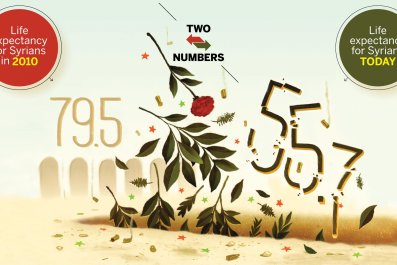Updated | Are physicians in the United States getting dumber? That is what one of the most powerful medical boards is suggesting, according to its critics. And, depending on the answer, tens of millions of dollars funneled annually to this non-profit organization are at stake.
The provocative question is a rhetorical weapon in a bizarre war, one that could transform medicine for years. On one side is the American Board of Internal Medicine (ABIM), which certifies that doctors have met nationally recognized standards, and has been advocating for more testing of physicians. On the other side are tens of thousands of internists, cardiologists, kidney specialists and the like who say the ABIM has forced them to do busywork that serves no purpose other than to fatten the board's bloated coffers.
"We don't want to do meaningless work and we don't want to pay fees that are unreasonable and we don't want to line the pockets of administrators,'' says Dr. Paul Teirstein, a nationally prominent physician who is chief of cardiology at Scripps Clinic and who is now leading the doctor revolt.
The physicians lining up with Teirstein are not a bunch of stumblebums afraid of a few tests. They include some of this nation's best-known medical practitioners and academicians, from institutions like the Mayo Clinic, Harvard Medical School, Columbia Medical School and other powerhouses in the field.
This spat is hardly academic, though. Some doctors are leaving medicine because they believe the ABIM is abusing its monopoly for money, forcing physicians to unnecessarily sacrifice time with their patients and time for their personal lives.
A little history: For decades, doctors took one exam, usually just after finishing training, to prove they had absorbed enough medical knowledge to treat patients. Internists—best known as primary care physicians—would take one test while those who chose subspecialties of internal medicine—cardiovascular disease, critical care, infectious disease, rheumatology—sat for additional exams. Doctors maintained their certification status by participating in programs known as "continuing medical education," which, when done right, keep physicians up on developments in their field.
The value to a doctor of being certified can scarcely be overstated. Many organizations will not hire uncertified doctors. And, without that stamp of approval, even doctors who open their own practices rarely receive permission from hospital boards to treat their patients in hospitals. It was a sensible way to make sure doctors stayed on top of their game and weed out incompetent clinicians.
Someone, of course, had to pay for the testing and continuing education, and it was usually the doctors. So physicians shelled out money to the ABIM to take the tests, and then ponied up more cash to attend conferences and other programs for continuing medical education. Few objected—it was worth the money to keep up the profession's standards.
But then ABIM decided that rather than just having doctors take one certification test, maybe they should take two. Or three. Or more. Under this new rule adopted in the early 1990s, internists and subspecialists recertify every 10 years with new tests. In other words, a doctor certified at the age of 30 could look forward to taking an ABIM exam at least three more times before retirement. This was not cheap—doctors spend thousands of dollars not only for the tests, but for review sessions, for time away from their practices. And with each new test, the ABIM made more money.
Physicians sheepishly went along with the process, assuming their good old pal the ABIM was working hard to make sure medical practitioners were fully qualified.
Then, something strange happened, doctors say. The tests started including questions about problems that had nothing to do with how doctors did their jobs. For example, endocrinologists who worked exclusively with adults said they were forced to answer questions about endocrinology for children, even though the pediatric information was irrelevant to their practices. Heart specialists who do not perform transplants – and even those at hospitals with no heart transplant programs – said they had to study techniques for reading transplant tissue slides and how best to evaluate these patients so they could answer questions on the tests. But that knowledge was unrelated to the care they provide to their real patients, they said, and took time that they could have spent learning the latest medical findings about the cardiology work they actually perform.Videos and study sessions sold to help doctors prepare for re-certification exams often featured instructors saying physicians would never see a particular condition or use a certain diagnostic technique, but they needed to review it because it would be on the test. "Exam questions often are not relevant to physicians' practice," Teirstein says. "The questions are often out-dated. Most of the studying is done to learn the best answer for the test, which is very often not the current best practice."
The result? According to the ABIM'S figures, the percentage of doctors passing the recertification test started dropping steadily. In 2010, some 88 percent of internists taking the maintenance of certification exams passed; by 2014, that had fallen to 80 percent. Hematologists dropped from 91 percnet to 82 percent. Interventional cardiologists went from 94 percent to 88 percent. Kidney specialists, 95 percent to 84 percent. Lung experts, 90 percent to 79 percent.
Wow. Was it Obamacare? Ebola? A sign of the end times? What was turning so many American doctors so stupid all of sudden? Not to worry, the ABIM declares—the board could help doctors keep their certification. All they had to do was pay to take the tests again. Making doctors appear ignorant became big business, worth millions of dollars, and the ABIM went from being a genial organization celebrated by the medical profession to something more akin to a protection racket.
The ABIM disputes that characterization. Lorie B. Slass, a spokesperson for the ABIM, says "there have been and always will be" fluctuations in test results, since different groups of doctors are taking the exam each year. But in each of the categories cited above, there are no statistically significant fluctuations—the passing rate keeps going down. So the point remains: Either doctors are getting dumber each year, or the test that helps determine who gets to practice medicine has less and less to do with the actual practice of medicine.
Slass says the suggestion that the ABIM is "purposefully failing candidates on their exams to generate more revenue is flat-out wrong." Maybe so, but according to the Form 990s filed with the Internal Revenue Service, in 2001—just as the earliest round of new-test standard was kicking in—the ABIM brought in $16 million in revenue. Its total compensation for all of its top officers and directors was $1.3 million. The highest paid officer received about $230,000 a year. Two others made about $200,000, and the starting salary below that was less than $150,000. Printing was its largest contractor expense. That was followed by legal fees of $106,000.
Twelve years later? ABIM is showering cash on its top executives—including some officers earning more than $400,000 a year. In the tax period ending June 2013—the latest data available—ABIM brought in $55 million in revenue. Its highest paid officer made more than $800,000 a year from ABIM and related ventures. The total pay for ABIM's top officers quadrupled. Its largest contractor expense went to the same law firm it was using a decade earlier, but the amounts charged were 20 times more.
And there is another organization called the ABIM Foundation that does...well, it's not quite clear what it does. Its website reads like a lot of mumbo-jumbo. The Foundation conducts surveys on how "organizational leaders have advanced professionalism among practicing physicians." And it is very proud of its "Choosing Wisely" program, an initiative "to help providers and patients engage in conversations to reduce overuse of tests and procedures," with pamphlets, videos and other means.
Doesn't sound like much, until you crack open the 990s. This organization is loaded. In the tax year ended 2013, it brought in $20 million—not from contributions, not from selling a product, not for providing a service. No, the foundation earned $20 million on the $74 million in assets it holds.
The foundation racked up $5.2 million in expenses, which—other than $245,000 it gave to the ABIM—was divided into two categories: compensation and "other." Who is getting all this compensation? The very same people who are top earners at the ABIM. Deep in the filings, it says the foundation spends $1.9 million in "program and project expenses," with no explanation what the programs and projects are.
There are some expenditures, though, that are easy to understand: The foundation spends $153,439 a year on at least one condominium. And it picks up the tab so the spouse of the top-officer can fly along on business trips for free.
The ABIM is not what it was. Its original mission was to make sure doctors provide patients with the best care. When condominiums and lavish salaries and free trips and making money off of physicians failing tests became a priority, the evidence suggests the organization lost its way.
But that may not matter soon. In January 2014, when the ABIM issued a series of new requirements for maintaining certification—that would have generated all new fees—Teirstein and his colleagues declared "enough." They recently formed a new recertification organization called the "National Board of Physicians and Surgeons." It will only consider doctors for recertification who have passed the initial certification exam that has been required for decades. Doctors must also log a set number of hours with programs that qualify under guidelines as continuing medical education. The group's fees are much, much lower than those charged by the ABIM. And its board and management—all top names in medicine—work for free.
This new board is not just about breaking the ABIM monopoly, Teirstein says, but is also part of an effort to put the right people in charge of the profession's future. Medicine has been "controlled by individuals who are not involved with the day to day care of patients," he says. "It is time for practicing physicians to take back the leadership."
Correction: An earlier version of this story incorrectly suggested that ABIM also certifies anesthesiologists. Anesthesiologists are certified by the Board of Anesthesiology.




























